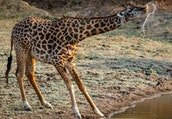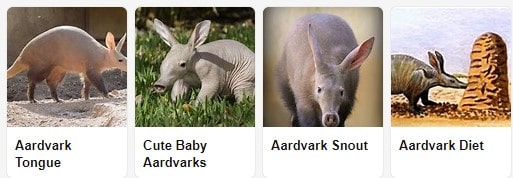- 1. Aardvarks Appearance: Aardvarks have a stocky body with a round snout, long ears, and a thick tail. They have a grayish-brown or reddish-brown coarse fur that provides camouflage in their natural habitat. Aardvarks have strong, sturdy limbs with large claws used for digging.
- 2. Aardvarks Habitat: Aardvarks are found throughout various habitats in sub-Saharan Africa, including grasslands, savannas, woodlands, and scrublands. They prefer areas with loose soil that is easy to dig.
- 3. Aardvarks Nocturnal Behavior: Aardvarks are primarily nocturnal, meaning they are most active during the night. They have poor eyesight but possess an excellent sense of smell, which they rely on for locating food and detecting predators.
- 4. Aardvarks Diet: Aardvarks are specialized insectivores, primarily feeding on ants and termites. They use their powerful front claws to dig into termite mounds and ant hills, and then use their long, sticky tongue to capture the insects. A single aardvark can consume thousands of insects in a night.
- 5. Aardvarks Burrowing and Shelter: Aardvarks are skilled diggers and create complex burrow systems. These burrows serve as their shelters during the day, providing protection from predators and extreme temperatures. Aardvark burrows can be extensive, with multiple entrances and interconnected tunnels.
- 6. Aardvarks Predators: Aardvarks face threats from various predators in their environment. Lions, leopards, hyenas, African wild dogs, and pythons are among the predators that can prey on aardvarks. When threatened, aardvarks can defend themselves by using their strong claws and biting if necessary.
- 7. Aardvarks Reproduction: Aardvarks are solitary animals except during mating. Females give birth to a single offspring, called a cub, after a gestation period of about seven months. The young aardvark remains in the burrow for several weeks before venturing out, and they are weaned by three months.
- 8. Aardvarks Conservation Status: Aardvarks are currently classified as a species of "Least Concern" by the International Union for Conservation of Nature (IUCN). However, they face threats from habitat loss due to human activities such as agriculture and mining, as well as hunting for their meat and scales.
- 9. Aardvarks Cultural Significance: Aardvarks have cultural significance in some African societies. They feature in folklore, myths, and art of certain indigenous communities. In popular culture, aardvarks have been depicted in various forms, including children's books and cartoons (e.g., the character Arthur from the animated series "Arthur" is an aardvark).
Aardvark in Africa:
The aardvark is a unique mammal native to Africa. It is known for its distinctive appearance and specialized feeding habits. Here are some key points about aardvarks:








 |
|  |
|  |
|  |
| 